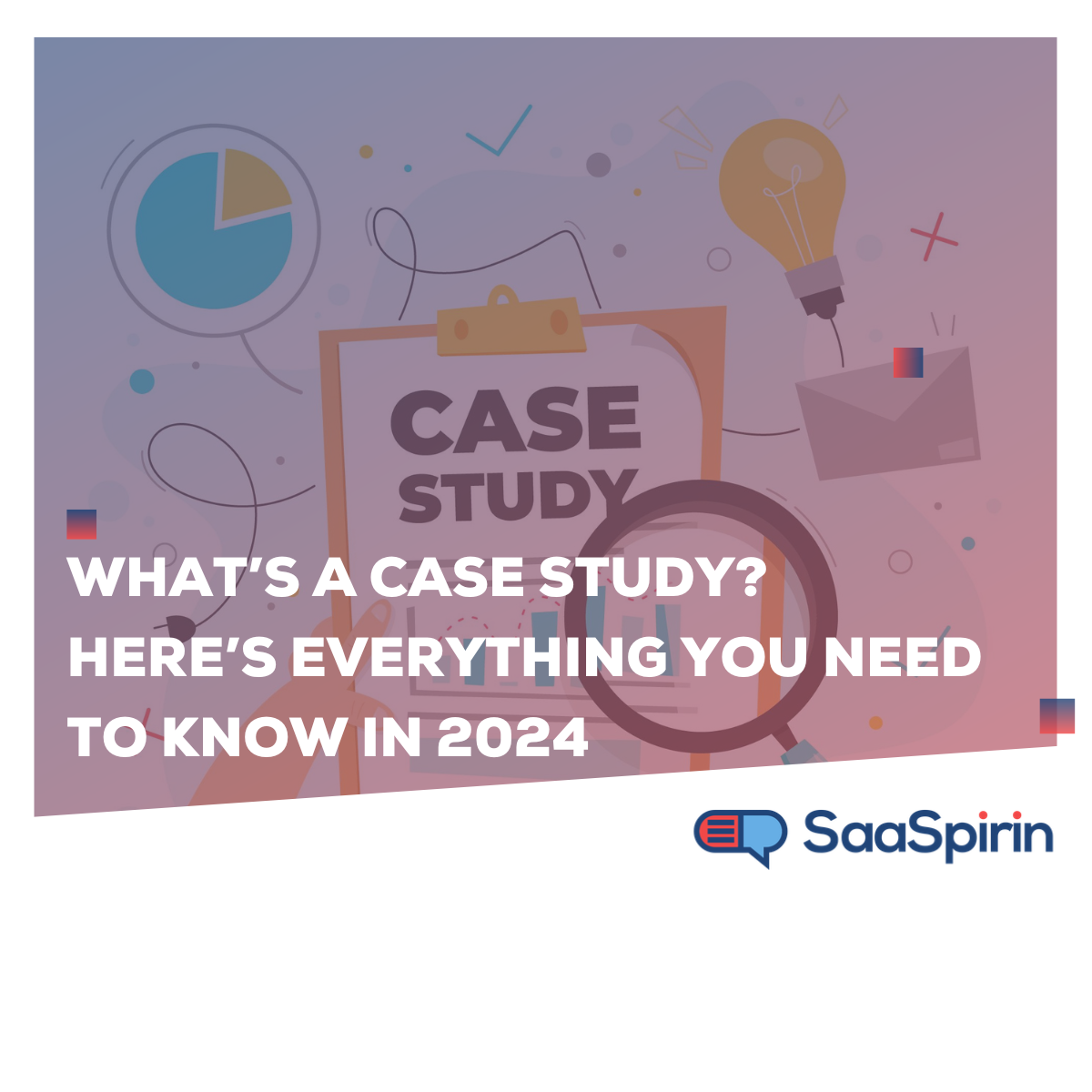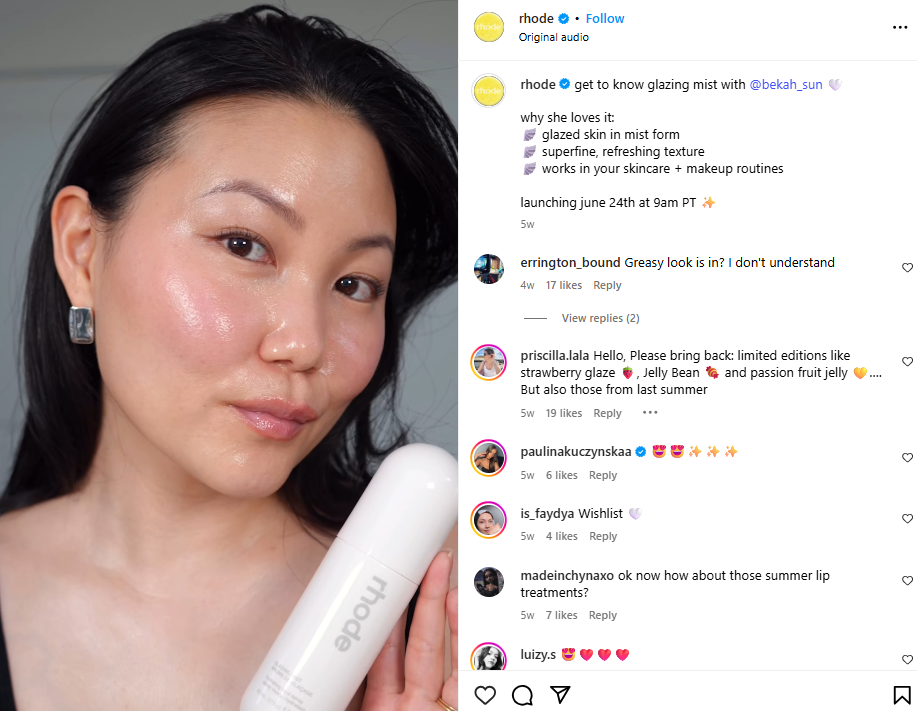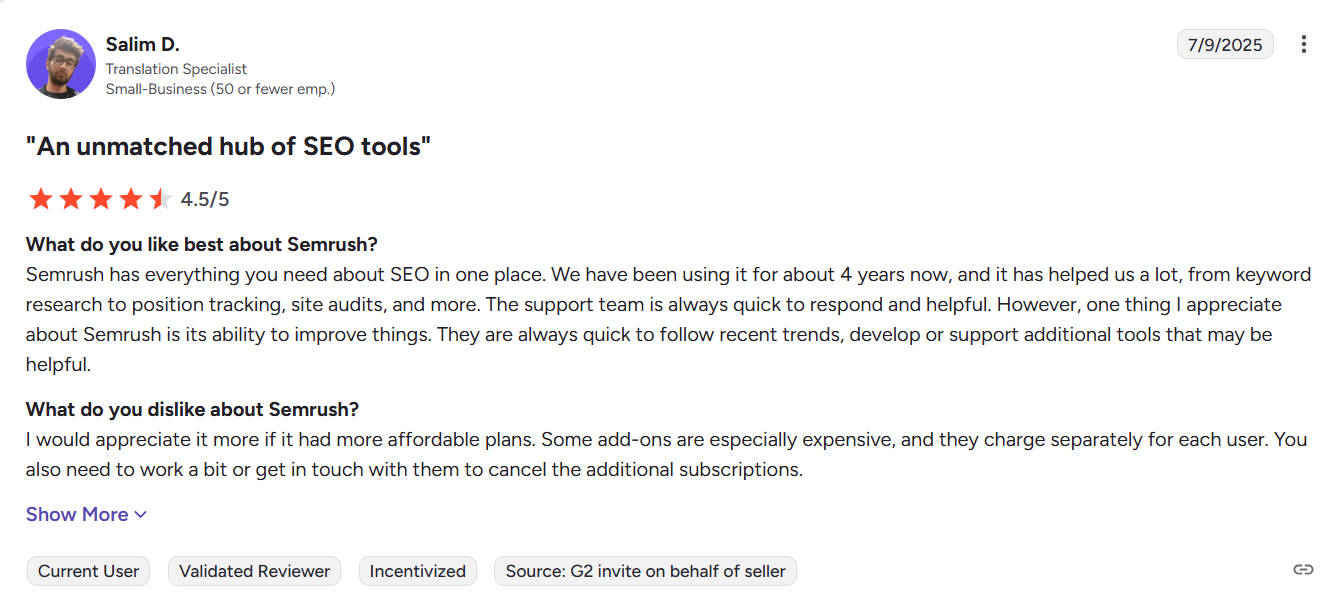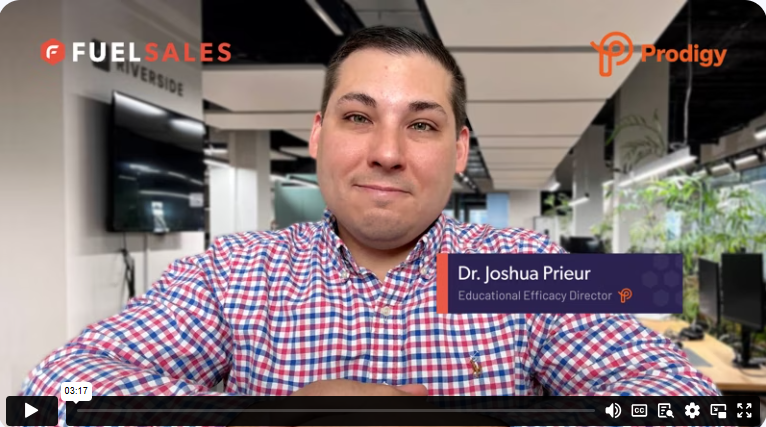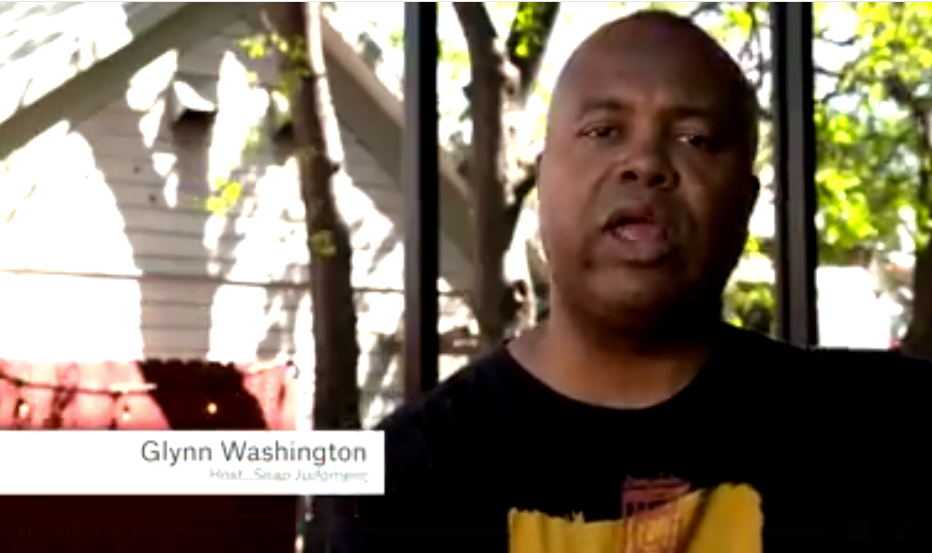How Does Testimonial Advertising Turn Customers Into Revenue?
By Nicolas Jacobeus on September 30, 2025
|
TL;DR
|
|---|
We all do it.
We Google. We scroll. We skim the stars. Then we deep-dive into that one review where someone swears this tool “changed their life,” “saved their launch,” or “finally got their team organized.” And suddenly… we’re sold.
Because we don’t trust brands. We trust people. People like us, who’ve been burned before, who’ve tried the clunky alternatives, who’ve fought the same fights and come out on the other side with a solution that actually works.
That’s why advertisements with testimonials hit differently.
They’re not just marketing fluff, they’re little stories of transformation. They say, “Hey, we were where you are. And this is what helped.”
We’re unpacking the magic behind why do advertisers use testimonials, why it works, how the best brands are nailing it, and how you can turn your happy customers into your most persuasive sales team.
What Are Testimonials in Advertising?
Testimonial ads are exactly what they sound like, ads powered by real customer feedback instead of brand fluff.
We’re talking quotes, testimonial videos, screenshots, or short stories where actual users explain how your product solved a real problem. The catch? You don’t write the script, they do. You just frame it, polish it, and put it in front of the right people.
In the tech and SaaS world, that’s huge. Because no one believes your “industry-leading” copy or your 20‑second demo reel anymore. But when a RevOps manager says, “We cut churn by 40% after switching to this tool,” people pay attention.
Testimonial ads come in all shapes:
-
A LinkedIn ad with a bold client quote + logo
-
A video clip of a customer walking through how they use your product
-
A tweet screenshot embedded in a retargeting ad
-
A Google search ad that starts with a testimonial line
They’re not about vanity. They’re about proof. And in markets where buyers are comparing five tabs and 12 tools, the product with the most believable story usually wins.
What are the Types of Testimonials I Can Use?
Not all ads with testimonials hit the same. Some are quiet but confidence builders. Others are scroll-stoppers. Here are the four most effective types, and when to use them.
1. What are Written Reviews?
The classic. Whether it’s a glowing G2 quote or a one-liner from a customer email, written testimonials are low-effort and high-impact, especially when dropped in the right place.
Most of us check reviews before buying anything. In fact, written testimonials influence buying decisions more than discounts, because people trust people, not price tags.
Best for: landing pages, nurture emails, and retargeting ad copy.
Try this: Take a G2 quote, add your customer’s logo, and turn it into a clean LinkedIn single-image ad.
2. What are Video Testimonials?
Video is where trust gets personal. A customer talking through their actual workflow, showing how your product fits into their day, that hits way harder than any explainer video.
An article by Forbes says people remember 95% of what they see in a video (compared to just 10% of what they read). And nearly 80% say a testimonial video made them more likely to buy.
Best for: LinkedIn ads, sales decks, landing pages, demo follow-ups.
Want a shortcut? SaaSpirin turns your best customer wins into done-for-you written, video, and social-ready testimonials, without chasing clients, editing footage, or writing a single script. Your customers tell the story. SaaSpirin turns it into assets that convert.
3. What is UGC (User-Generated Content)?
UGC is raw, real, and ridiculously effective. We’re talking tweet screenshots, casual product walkthroughs, Slack shoutouts, anything your users share without being asked.
Short-form UGC gets more engagement than polished branded content, and conversion rates can jump as much as 90% when it’s part of your funnel (Source).
Best for: paid social, founder content, case study intros.
Try this: Turn a customer’s casual Slack comment into your next testimonial ad.
4. Influencer Testimonials
Sometimes the best testimonial doesn’t come from a user; it comes from someone your audience looks up to. When it’s authentic, an influencer shoutout can lend instant credibility.
With influencer marketing now worth over $24 billion (Source), even niche SaaS categories are tapping experts to build trust at the top of the funnel.
Best for: launches, vertical expansion, brand awareness.
Just skip the overproduced scripts. If it doesn’t sound real, it won’t convert.
Doesn't sound like something you'd want to explore? Try an alternative- What is and How to Write a Success Story (With Examples & Templates)
Why Testimonial Ads Are So Effective?
If you’ve ever bought something after reading “This actually worked for us,” you already know the answer. But here’s a breakdown of why testimonial ads work so well, especially in industries where trust is everything and attention spans are short.
a) They Build Trust (Fast)
Buyers are skeptical. They’ve seen too many “#1 rated” claims and empty product promises. But real customer stories? That’s proof.
-
72% of people trust a brand more after reading a testimonial (Forbes)
-
Nearly half trust online reviews as much as personal recommendations
A testimonial from someone with the same title, pain point, and tech stack as your prospect? That lands harder than any sales script.
b) They Leverage Social Proof
People follow people, especially when they’re unsure.
This is the core of social proof: we feel safer making decisions when others have gone first. Testimonial ads tap into that by showing your future customers that their peers have already said yes, and succeeded.
It’s less “look at us,” and more “look who we’ve helped.”
c) They Create an Emotional Connection
You can list features all day, but a story about how your tool saved someone’s project, helped them sleep better, or got their team back on track? That sticks.
Video testimonials and UGC hit especially hard here. They show real people, with real problems, telling a real story, and that relatability builds loyalty before the first demo even happens.
d) They Drive Conversions
Trust and emotion are great, but what about results?
-
Testimonials can increase purchase intent by up to 97% (Source)
-
Brands using them have seen sales lift by as much as 270% (Source)
And the best part? Once you create a great testimonial, it keeps working for you, across ads, emails, landing pages, and sales decks.
e) They Humanize Your Brand
AI can write your landing page. Your features might be similar to your competitors’. But your customers’ voices? That’s unique.
When everything feels generic, testimonial ads add the one thing most tech brands forget: a human face. As mentioned already, people remember 95% of a story told through video, but only 10% of plain text. So if you want to be memorable, show real people saying real things.
What’s the Difference: Testimonials vs. Endorsements?
|
Feature |
Testimonials |
Endorsements |
|---|---|---|
|
Who it’s from |
Real customers |
Paid influencers or public figures |
|
Tone |
Authentic, experience-driven |
Promotional, often scripted |
|
Compensation |
None |
Usually compensated (cash/product) |
|
Trust factor |
High (peers > brands) |
Medium (depends on credibility) |
|
Legal requirement |
No disclosure needed (if unpaid) |
Must disclose payment or relationship |
|
Use case |
Ads, sales decks, case studies |
Top-of-funnel awareness, brand reach |
|
Best for |
Building trust, proof, and conversion |
Driving visibility, fast reach |
They might look similar in your feed, someone saying nice things about a product, but testimonials and endorsements aren’t the same thing.
Testimonials = Real Customers
These come straight from your users. No scripts, no contracts, just real experiences with your product. Think: a founder posting how your platform helped them cut churn. Or a customer review that becomes a quote card.
These are earned, not bought, and that authenticity is what makes them powerful.
Endorsements = Paid Partnerships
Endorsements come from influencers, celebrities, or public figures who are paid (or compensated in some way) to speak about your product. They might genuinely love it, but legally, they have to disclose that they were hired to say so.
You’ve seen it: “This video is sponsored by…”
So now that we know the difference between getting love vs. paying for it, let’s talk about how to actually make testimonial ads work.
What are the 5 Tips for Successful Testimonial Advertising?
Good testimonials talk. Great ones convert. Here’s how to make sure yours do both, especially in SaaS and B2B, where trust takes time and buying cycles are long.
1. Choose Testimonials That Sound Like Your Buyer
Skip the vague praise. Use testimonials that sound like something your actual prospects would say. A RevOps lead saying, “This saved us 10 hours a week” will land far better than “Great tool!”
In B2B, buyers are more likely to trust testimonials that feel unscripted. Real voice matters more than polished soundbites, especially when your audience is comparing three competitors on three tabs.
2. Match the Right Story to the Right Persona
The best testimonial in the world won’t work if it’s aimed at the wrong person. A startup founder and an enterprise buyer have completely different decision drivers.
Segment testimonials by role, company size, or industry. Testimonials should mirror your prospect’s reality, tech stack, team size, and all.
3. Make the Results Clear
Specific outcomes beat generic love every time. Instead of “We love it,” go for “We reduced churn by 18% in Q1.” That’s the kind of proof buyers can run up the chain.
Data-backed storytelling builds credibility fast, especially when it ties to common pain points like churn, onboarding time, or lead quality.
4. Place Testimonials Where Decisions Happen
Don’t just throw testimonials on a wall of logos. Put them where your buyers hesitate: pricing pages, demo request forms, comparison pages.
5. Always Include a CTA
A testimonial is not the end, it’s the setup. Once you’ve earned belief, guide the next move: “See the full case study,” “Book a call,” or “Try it free.”
A strong CTA turns trust into traction. Without one, it’s just a nice quote sitting there doing nothing.
And while you are at it, here are 10 Case Study Questions to Uncover Insights and Win Clients.
What are Some Testimonial Advertising Examples You'll Actually Want to Steal?
We’ve talked strategy. Now let’s see it in action.
From scrappy UGC to polished video case studies, 4 examples show a different angle on how social proof can be packaged, positioned, and pushed across channels for maximum impact.
Use these as inspiration or as a benchmark for what you’re building next.
1. FuelSales & Prodigy Education
Testimonial format: Video + Written Case Study + Social Assets
Channel fit: LinkedIn, Sales Decks, Blog, Outreach Collateral
What they did:
FuelSales partnered with Prodigy Education to drive lead generation in the EdTech space. But they didn’t just deliver results, they turned those results into a powerful narrative.
With a testimonial video, a structured case study, and bite-sized social assets, FuelSales finally had the proof to match their performance.
Why this works:
-
Highlights measurable impact with a well-known EdTech brand
-
Builds authority through client voice, not self-praise
-
Assets were designed for real sales use, from decks to DMs
Ad idea:
-
Clip from Prodigy’s video testimonial with quote overlay
-
Headline: “How outsourcing helped Prodigy scale pipeline growth”
-
CTA: “See how FuelSales drives commercial outcomes in EdTech”
See the impact of a well-crafted success story? SaaSpirin managed the entire process, from initial interviews to delivering a selling-ready asset.
Want to achieve similar results? Schedule a chat on my calendar to discuss your needs.
2. Shopify’s Video Case Study on LinkedIn
Testimonial format: Video case study from a satisfied merchant
Channel fit: LinkedIn, YouTube, landing pages
What they do:
Shopify features real merchants on LinkedIn, showcasing specific wins like migrating from another platform, scaling internationally, or hitting revenue milestones. These videos balance polished production with genuine customer stories.
Why it works:
-
Uses real business results and peer credibility
-
Targets merchants facing similar challenges
-
Native LinkedIn placement means more trust and higher engagement
3. SurveyMonkey’s Influencer Video Ad
Testimonial format: Branded narrative featuring a trusted voice + influencer-amplified UGC
Channel fit: Streaming, CTV, social media, and programmatic
What they did:
SurveyMonkey launched a wide-reaching campaign narrated by Giancarlo Esposito, compelling business leaders to “Ask the people. Listen to them…And then act.” It was part serious business pitch, part creative brand statement, and mirrored by UGC from TikTok and YouTube creators showcasing real uses of the platform.
Results:
-
#surveymonkey views shot from 200K to nearly 9 million in just four weeks on TikTok.
-
Campaign racked up over 710 million video views across platforms
-
Brand CPC dropped 58%, while awareness and recall rose by 3–5%.
Why it works:
A powerful combination of trusted voice, clear messaging, and real-world UGC made this feel less like an ad and more like a movement.
4. Dropbox’s Journalism‑Style Case Study Teaser
Testimonial Format: Text/image teaser styled like an investigative story
Channel Fit: Facebook (organic and paid), LinkedIn feeds
What They Did:
Dropbox treated their case study preview like a mini-news article, no fluffy intro copy or flashy visuals. Instead, they led with a compelling narrative hook that piqued curiosity and felt like something you'd stop your scroll for. Only after the click would users discover the product angle. A simple testimonial quote or outcome line does the heavy lifting.
Why It Works:
-
Feels editorial, not “ad.” That lowers ad fatigue in social feeds.
-
Sparks curiosity and drives click-through, not with hype, but with story.
-
No need for high-budget video, text & minimal visuals can still build momentum.
Implementation Tip:
Use a bold teaser line like:
“How X used Dropbox to cut project delivery time in half.”
Pair it with a single customer quote or metric, then link to the full case on your blog or landing page.
How to Implement Negative Testimonials as a Trust-Building Strategy?
Perfect reviews don’t always build perfect trust. In fact, when everything looks too polished, prospects start to question the authenticity. That’s where well-managed negative testimonials come in, not as a risk, but as a credibility asset.
Does Negative Review Really Work?
Research shows that buyers are more likely to trust brands with a mix of feedback, not just the glowing kind. According to PowerReviews, products with an average rating between 4.2 and 4.5 often convert better than those with a flat 5.0. A few critical notes signal honesty, and that builds confidence.
In B2B and SaaS especially, where no product fits every use case perfectly, showing how your team handles imperfection is often more persuasive than pretending it doesn’t exist.
When to Use This Approach?
-
For complex products where hiccups are normal
-
When selling into mature, skeptical audiences who value transparency
-
To build trust with early adopters and technical buyers
Here's how to Use Negative Testimonials Strategically-
1. Acknowledge the issue, then show the outcome
Don’t hide the flaw, frame it as part of your evolution.
Example: “The onboarding felt overwhelming at first, but their support team walked us through every step, and we were live in a week.”
2. Use it to filter the right audience
Sometimes the "negative" is just a mismatch. If your tool isn’t for freelancers, a testimonial that says “Too complex for solo users” can actually reinforce your fit for enterprise teams.
3. Pair it with a resolution or roadmap
If a user struggled with a missing feature that’s now live, say so. It shows you're listening and improving, not just pitching.
Negative testimonials, when used with intention, don’t weaken your message; they strengthen it. They make your brand more believable, your team more responsive, and your wins more grounded in reality.
If you're collecting testimonials, don't just look for the praise. Look for the friction points that turned into wins. That’s where the trust is.
How To Repurpose Testimonials for Modern Ad Formats (Short-Form Video, Stories, Reels)?
Today’s buyers live on scrollable, fast-paced platforms, LinkedIn feeds, Instagram stories, and YouTube Shorts. And guess what? They’re watching.
So why not meet them where they are, with proof that actually performs?
How to Turn One Testimonial Into 10x Visibility?
Start with a great video testimonial or even a Zoom recording from a happy customer. Then:
-
Trim it down to 15–30 second clips. Focus on one moment of transformation, a pain point solved, or a clear win.
-
Add bold captions and clean branding. Most short-form videos are watched on mute, so make it readable at a glance.
-
Hook them in the first 3 seconds. Lead with the result: “We cut onboarding time by 40% with [Tool Name].” That’s what stops the scroll.
And the payoff?
Landing pages with video testimonials convert up to 39% higher than those without (Source). Even sales pages with short-form clips report significantly better lead quality.
What are the Formats That Work Well?
-
Instagram Stories / Reels — Use short, vertical clips with quote overlays
-
LinkedIn Video Posts — Great for B2B audiences, especially founder-led
-
YouTube Shorts / TikTok — For brands targeting younger or tech-savvy audiences
-
Sales Decks — A silent testimonial clip can often say more than five bullet points
Testimonial videos don’t need to be high-budget or overly polished. What matters is the clarity of the win and the relatability of the person saying it. Real > perfect.
And if you don’t want to mess with slicing, captioning, and resizing? That’s where done-for-you services like SaaSpirin come in, turning one happy customer into a multi-format content engine.
Tired of Chasing Testimonials? There’s a Better Way
Creating great testimonial ads sounds amazing, until you try doing it manually.
You have to track down the right customer, schedule a call, collect a quote, polish the copy, edit the video, and adapt it to 5 different formats. All while juggling 20 other things.
That’s exactly what SaaSpirin was built for.
What SaaSpirin Actually Does:
-
Interview your customers (no chasing or awkwardness)
-
Write your case studies and testimonial posts
-
Builds multi-format assets- video clips, quote cards, social snippets, all ready to use
Whether you need something polished for your sales deck or a scroll-stopping quote for LinkedIn, we help you turn existing customer wins into shareable, trust-building content.
👉 Check out SaaSpirin if you’re ready to finally put those customer stories to work.
Frequently Asked Questions
How can businesses ensure the authenticity of testimonials?
Stick to authentic testimonials from verified users. Showcase real names, roles, or photos on your testimonial page. Avoid fake product reviews; today’s potential customers spot them easily. Transparency builds trust and supports stronger marketing campaigns.
Are video testimonials more impactful than written ones?
Yes. A video testimonial ad delivers genuine enthusiasm and shows real people explaining the results of their products. Compared to traditional ad copy, video improves recall and builds trust, making it one of the most powerful tools in content marketing.
What is a testimonial advertising technique?
It’s the use of positive experiences from customers to influence potential clients. This can include social media posts, print ads, or a Facebook video testimonial ad aimed at a specific audience, often boosting marketing efforts with real, relatable proof.
What is a testimonial ad in marketing?
A testimonial ad shares a real customer’s story or quote to show the direct impact of a product. Unlike generic claims, testimonial advertisements feature actual feedback, usually tailored to the target audience, whether through Instagram posts or landing pages.
What are the three types of testimonials?
The main types of testimonial advertising include: Written reviews on a dedicated testimonial page, video testimonial advertising examples, and social media ads using UGC or influencer content. Each format targets new customers at different funnel stages.
What is the difference between testimonial ads and endorsements?
Testimonial ads come from actual customers sharing positive experiences. Endorsements usually involve industry experts or influencers paid to promote. While both can sway potential customers, testimonials often feel more genuine, ideal for business owners wanting stronger marketing campaigns.
Are you wasting money on Google Ads?
If you're using traditional ad copy without proof, yes. Including testimonial ad examples in your ad campaign, like a quote from a specific audience, can improve click-throughs and convert new customers by reinforcing customer success.
How do consumer perceptions of authenticity impact testimonial advertising?
Buyers trust authentic testimonials over polished claims. If your social media ads feel scripted or vague, your target audience might tune out. Showing genuine enthusiasm and real results of their products has a far greater effect on potential customers.
When should you use testimonials in the sales cycle?
Use testimonials wherever friction exists: free trial pages, pricing sections, or content marketing emails. Tailor testimonial advertisements by funnel stage, Instagram posts early on, video testimonial ads closer to decision points, especially for potential clients in B2B spaces.
Do infomercials use actors for testimonials?
Often, yes. Some testimonial ads in infomercials use actors to dramatize positive experiences, which can reduce perceived trust. But for effective testimonial ads, nothing beats real customer voices shared via social media posts or a dedicated testimonial page.
You May Also Like
These Related Stories
How Does Testimonial Marketing Turn Customers Into Revenue?
.png)
How to Ask for a Testimonial From A Client Not Being Pushy?
